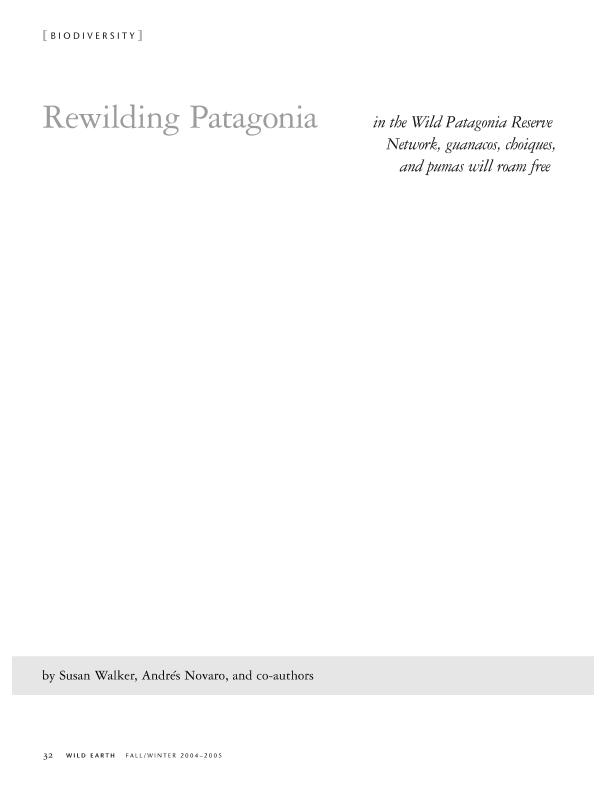Artículo
Rewilding Patagonia : in the Wild Patagonia Reserve Network, guanacos, choiques, and pumas will roam free
Walker, Susan; Novaro, Andres Jose ; Funes, Martín; Baldi, Ricardo
; Funes, Martín; Baldi, Ricardo ; Chehébar, Claudio; Ramilo, Eduardo Juan; Ayesa, Javier Alejandro; Bran, Donaldo Mauricio
; Chehébar, Claudio; Ramilo, Eduardo Juan; Ayesa, Javier Alejandro; Bran, Donaldo Mauricio ; Vila, Alejandro; Bonino, Never Antonio
; Vila, Alejandro; Bonino, Never Antonio
 ; Funes, Martín; Baldi, Ricardo
; Funes, Martín; Baldi, Ricardo ; Chehébar, Claudio; Ramilo, Eduardo Juan; Ayesa, Javier Alejandro; Bran, Donaldo Mauricio
; Chehébar, Claudio; Ramilo, Eduardo Juan; Ayesa, Javier Alejandro; Bran, Donaldo Mauricio ; Vila, Alejandro; Bonino, Never Antonio
; Vila, Alejandro; Bonino, Never Antonio
Fecha de publicación:
12/2005
Editorial:
Wild Earth Association
Revista:
Wild Earth
ISSN:
1055-1166
Idioma:
Inglés
Tipo de recurso:
Artículo publicado
Clasificación temática:
Resumen
The Patagonian steppe of Argentina is a vast area-almost 750,000 square kilometers- of arid plains and scrub ecosystems in the rain shadow of the southern Andes, at the tip of South America. The name "Patagonia" evokes romantic images of a windy wilderness at the end of the Earth. Indeed, a recent article in National Geographic described Patagonia as the "wild, wild south," and Conservation International has identified the region as a wilderness and one of "Earth's Last Wild Places" based on its size, low population density, and purported lack of change in vegetation. But what is a wilderness or a wild place? It's an area dominated by natural processes, home to a complete life community, and, for the most part, undisturbed by human activity. Although Patagonia is vast and sparsely populated, and its climate and topography are as harsh and wild as ever, we argue that human activities over the past 100 years have deeply altered the structure and composition of Patagonian wildlife and vegetation communities, and that most of the region is no longer truly wild.
Palabras clave:
CONSERVATION
,
PATAGONIA
,
WILDERNESS
Archivos asociados
Licencia
Identificadores
Colecciones
Articulos(CCT-CENPAT)
Articulos de CTRO.CIENTIFICO TECNOL.CONICET - CENPAT
Articulos de CTRO.CIENTIFICO TECNOL.CONICET - CENPAT
Citación
Walker, Susan; Novaro, Andres Jose; Funes, Martín; Baldi, Ricardo; Chehébar, Claudio; et al.; Rewilding Patagonia : in the Wild Patagonia Reserve Network, guanacos, choiques, and pumas will roam free; Wild Earth Association; Wild Earth; 14; 3/4; 12-2005; 36-41
Compartir



